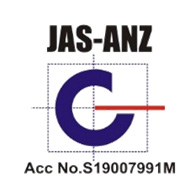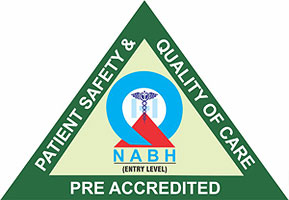+91-7291089674 (Bandra)
+91-7291092120 (Kandivali)




Daily contact lenses offer convenience and comfort for millions of people worldwide. However, concerns about their safety and long-term effects on eye health have led to debates among wearers and eye care professionals. In this article, we will explore the safety of wearing daily contact lens, the disadvantages associated with frequent contact lens usage and provide expert insights to help you make informed decisions about your eye care routine.
Read MoreAs summer approaches and temperatures rise, the sun shines brighter, making it vital to prioritize eye health. From harmful UV rays to dryness and allergies, summer season presents unique challenges to eye care. In this article, we’ll discuss some expert tips to safeguard your eyes and maintain optimal vision during the summer season.
Read MoreParenting a visually impaired child presents unique challenges, requiring understanding, support, and specialized care. In this article, we’ll will discuss practical tips, resources, and support for parents and the latest technology – smart vision glasses in Mumbai to support a visually impaired child.
Read MoreBlinking seems to be simple yet so important for our eye health that it often goes unnoticed. While it may appear as an involuntary reflex, blinking plays a significant role in maintaining eye health and visual comfort. In this article, we will discuss the importance of blinking, its physiological mechanisms, and its impact on overall eye health.
Read MoreDid you know that stress doesn’t just affect your mind and body; it can also affect our eyes? Stress is a normal part of life, but when it becomes too much, it can lead to serious health issues, including problems with your eyes.
Read MoreAbsolutely! It’s true—your eyes and sleep are linked. We all understand that sleep is crucial for a healthy body and a calm mind, but did you know it’s vital for your vision too? Just like our bodies, our eyes need a good 6–8 hours of sleep after a busy day. If you consistently miss out on sleep, it can lead to various vision issues and affect your eye health.
Read MoreGetting a pair of contact lenses means freedom from eyeglasses and discovering new visual details. Since your vision is crucial, making smart choices when using contacts is key. It takes time to get used to wearing and caring for contacts, so be patient and practice regularly. Following contact lens rules might be frustrating at first, but once you get the hang of it, you’ll see why many choose contacts over glasses.
Read MoreIf you plan to opt for laser vision correction (LASIK), then consider choosing SILK. In the world of vision correction, SILK is a super-advanced way to make your vision better. SILK emerges as a cutting-edge and sophisticated procedure, developed by Johnson and Johnson Vision. It uses an advanced laser technology called ELITA to fix common eye problems like myopia (nearsightedness), hyperopia (farsightedness), and astigmatism. Its goal is to quickly and accurately reshape the cornea, so you might not need glasses or contacts anymore.
Read MoreGetting vision correction done through a sure-shot procedure is essential for enjoying an improved quality of life. Silk Eye Surgery, which uses the most precise laser eye technology called “ELITA,” has become a popular choice for individuals seeking vision correction. As people consider this advanced procedure, an important factor influencing their decision is how much Silk Eye Surgery cost in India. Understanding the financial aspects of this innovative eye surgery is essential for those exploring vision correction options in India.
Read MoreFor those seeking freedom from glasses or contact lenses, Lasik, SMILE, and SILK eye surgeries represent significant milestones in medical success, providing outstanding solutions. However, each of these methods comes with its own unique set of advantages and considerations, making it challenging for patients to choose the right option for them.
Read MoreLight sensitivity, also known as photophobia, is a common condition that affects many individuals. It can range from mild discomfort to severe pain, impacting daily activities and quality of life. In this article let us learn more about what causes light sensitivity for your eyes.
Read MoreOmega-3 is a special kind of fat, and fats are like building blocks for our body. They’re called essential fatty acids because we need them, but our body can’t make them on its own. So, we have to get these important fats from the food we eat or from supplements.
Read MoreAs we get older, our eyes go through some changes, just like the rest of our body. Some eye problems are more likely to happen as we age, even though they can happen to anyone at any age. Growing older can lead to different eye conditions that might influence how well we can see and how healthy our eyes are overall. It’s good to know about these common eye issues so we can do things to stop or handle them.
Read MoreEating the right foods is really important for staying healthy and for the proper functioning of our body parts. And when we talk about foods that can help our eyes, the first thing that usually comes to mind is carrots. We’ve heard for a long time that eating these crunchy veggies is good for our eyes and can make our vision better. While it’s a well-known idea, we never thought there was a science behind it.
Read MoreAs almost all of us know, our eyes are precious, and ensuring their health is vital for our overall well-being. However, there are numerous misconceptions surrounding eye health that can lead to unnecessary worry. In this article, we will discuss some myths and facts that you need to know to make an informed decision about your eye care.
Read MoreThe eyes are among the most important senses and the most sensitive organs we have! But sometimes we forget to take good care of them. This can lead to people needing glasses or even losing their sight. That’s why it’s crucial to have regular check-ups for your eyes. In this article, we will explore more about why regular eye check-ups should be a priority for everyone.
Read MoreUndergoing eye surgery is a significant step towards achieving improved vision and overall eye health. But to make sure your eyes get better quickly after surgery, it’s essential to follow a few key guidelines. In this article, you will get to know a few valuable and important things about taking care of your eyes after surgery.
Read MoreExpecting a baby is a very special time for a woman. And during this time, it’s important to take good care of your health, including your eyes. Changes in hormones during pregnancy can sometimes cause eye issues. In this article, we’ll give you helpful tips to make sure your eyes stay healthy and your vision stays clear during this special time.
Read MoreWe are aware that when we exercise our muscles it improves our overall health, but does it work for improving our eyesight as well? Exercises for your eyes might not actually make much difference in your vision, but they can make your eyes feel more comfortable, especially if they get tired or irritated when you’re working.
Read MoreChalazion is a common eye condition that can cause discomfort and can be concerning for many individuals. It is associated with a small, growing inflammatory lump in the tear gland of the eyelid that is often mistaken for a stye. In this article, we will discuss all about chalazion, including its causes, symptoms, diagnosis, treatment options, and preventive measures.
Read More